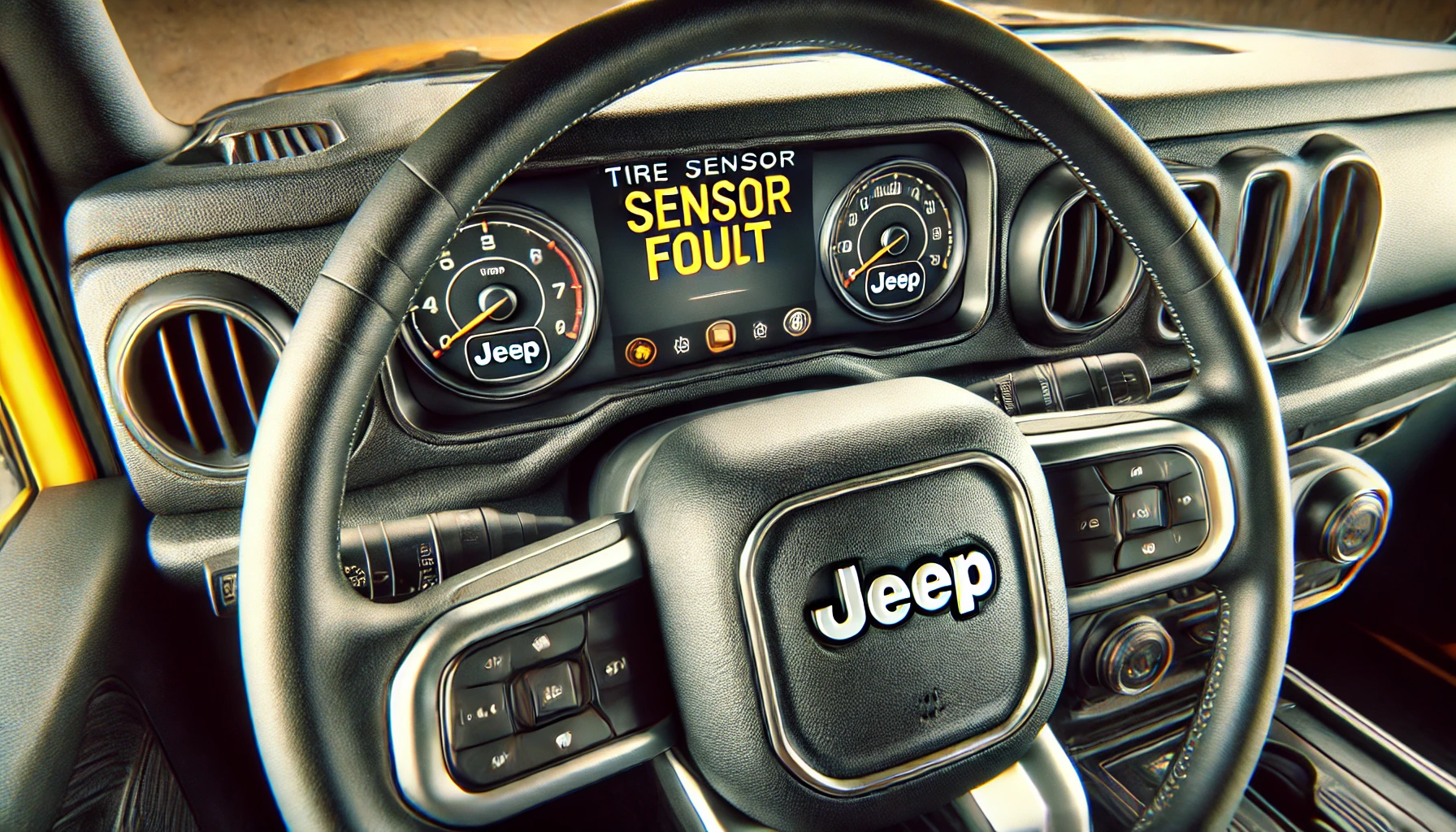
Jeep vehicles are built for rugged performance, and with the help of advanced technologies like the Tire Pressure Monitoring System (TPMS), drivers can stay aware of their tire conditions on any terrain. The TPMS monitors tire pressure and alerts the driver if something is wrong. However, if you see a Tire Sensor Fault warning on your dashboard, it means there’s an issue with the system. Fortunately, most TPMS problems are easy to fix. In this guide, we’ll walk through the common causes of tire sensor faults in Jeep vehicles and how to resolve them.
Common Causes of Tire Sensor Fault in Jeep Vehicles
Understanding the common causes behind a Tire Sensor Fault can help you troubleshoot the problem effectively:
- Low Tire Pressure: One of the most common reasons for a tire sensor fault is low tire pressure. When the tire pressure in one or more tires drops below the recommended level, the system triggers a warning.
- Damaged Sensors: Tire sensors in Jeep vehicles are installed inside the tires, often attached to the valve stem. They can get damaged during tire changes or while driving off-road, causing a malfunction.
- Sensor Battery Depletion: The sensors in Jeep vehicles are powered by small batteries that typically last several years. A weak or dead battery in one of the sensors can cause the fault warning to appear.
- Radio Frequency Interference: External electronic interference can sometimes cause communication problems between the sensors and the vehicle’s onboard TPMS system.
- Recent Tire Service: If your Jeep’s tires were recently rotated or changed, the sensors may not have been reset or recalibrated properly, leading to a fault warning.
Steps to Fix Tire Sensor Fault in Jeep Vehicles
If your Jeep displays a Tire Sensor Fault warning, here are the steps you can take to troubleshoot and fix the issue:
1. Check Tire Pressure Manually
The first and easiest step is to manually check the pressure in all four tires. Use a tire pressure gauge and compare the results with the recommended tire pressure for your Jeep, which you can find in the owner’s manual or on a sticker inside the driver’s door.
- If any tire is under-inflated, inflate it to the correct level.
- After adjusting the tire pressure, drive the vehicle for a few miles to see if the TPMS recalibrates and the fault clears on its own.
2. Reset the TPMS System
If adjusting the tire pressure doesn’t solve the problem, you may need to reset the TPMS system. Here’s how you can reset the system in most Jeep models:
- Turn the key to the On position without starting the engine.
- Navigate through the vehicle’s dashboard settings using the steering wheel controls to find the TPMS Reset option.
- Select Relearn Tire Positions or Reset TPMS depending on the model, and follow the on-screen instructions.
- Drive your Jeep at speeds above 15 mph for about 10-15 minutes to allow the system to relearn the tire pressure.
If the reset is successful, the Tire Sensor Fault warning should disappear.
3. Inspect Tire Sensors for Damage
If resetting the system doesn’t fix the issue, it’s possible that one or more tire sensors are damaged. The sensors are located inside the tires, attached to the valve stem, and can be damaged during tire changes, rotations, or off-road driving.
Visually inspect the valve stems for any visible damage. If a sensor is damaged, it will need to be replaced. This is a job best handled by a professional mechanic or at a Jeep-certified service center.
4. Replace Sensor Battery
The tire sensors in your Jeep are powered by batteries, and if the battery inside a sensor dies, the entire sensor will need to be replaced. Sensor batteries typically last 5 to 10 years but can weaken over time.
Since the battery itself is not replaceable, you will need to have the entire sensor replaced. This can be done at a Jeep dealership or a trusted mechanic who specializes in TPMS repairs.
5. Check for Software Updates
Sometimes a Tire Sensor Fault warning could be triggered by a software glitch in the vehicle’s TPMS system. Jeep occasionally releases software updates that may fix bugs and improve the performance of the TPMS.
Visit your nearest Jeep dealership or service center to check if a software update is available for your vehicle.
Preventing Future Tire Sensor Faults
- Regular Tire Pressure Checks: Make it a habit to check your tire pressure at least once a month, especially during temperature changes. This will help prevent unnecessary TPMS warnings.
- Care During Tire Changes: If you’re having your tires rotated or replaced, make sure the technician handles the TPMS sensors carefully to avoid damaging them.
- Routine Maintenance: Include TPMS sensor inspections during regular vehicle maintenance to ensure they’re in good condition. This can help catch issues before they trigger a fault warning.
- Software Updates: Keep your Jeep’s software up to date to prevent potential glitches that could affect the TPMS system.
Conclusion
A Tire Sensor Fault in your Jeep vehicle may seem alarming, but it’s often a minor issue that can be resolved with basic troubleshooting. Start by checking the tire pressure, reset the TPMS system, and inspect the sensors for damage. If the issue persists, visit a Jeep-certified service center to have the sensor replaced or to update the vehicle’s software. Regular maintenance and careful handling of your TPMS sensors will help keep your Jeep performing smoothly on all terrains.
